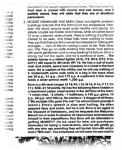For awhile I’ve had four pillars of judgment. Ease of Use at the Table, Evocative Writing, Interactivity, and the elusive Supreme-Court-Porn of ‘Design.’ I’ve toyed with the ideas that there is this kind of sliding spectrum of each and at some level they produce something that is worth your time to use. I think, now, though that I’m thinking of it wrong. The overwhelming feedback from most folks, when you talk about adventures, is how they don’t use them because they are hard to use. And they’re right. This points to the Ease of Use pillar. I suspect that there’s actually this hurdle in Ease of Use. The number one priority is to make it easy to use. Because if you don’t then no fucking person is going to use the fucking thing. It doesn’t have to be perfect in this regard, but you have to get over some hurdle. Just make it not torturous to use. Then if you can hit the bare minimum in terms of evocative writing and interactivity then you get a Recommendation. Maybe not even that, maybe you don’t even have to make it an interesting adventure with the writing or interactivity. Just make the fucking thing not a chore so it can actualy be used to play the game. That makes you a Journeyman. Anything at all in the other areas makes you a Master. There’s, how’s that for the setting the baf impossible fucking low and still seeing 90% of the designers not be able to meet it? (These rules only apply to MOSTLY everyone. Jabberwocky’s Wake still gets a pass from me.) Yeah, it’s really taken me ten years to come up with that. Go figure.
